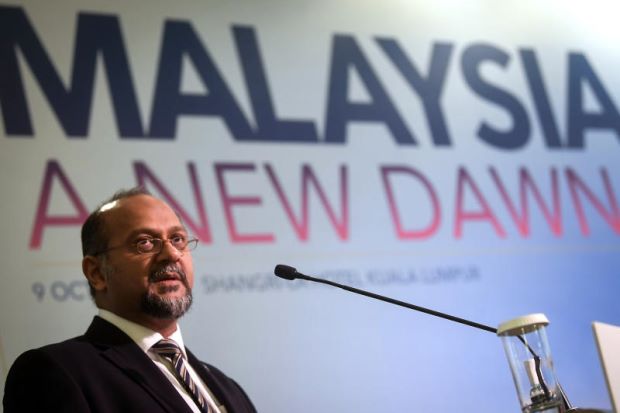Connecting Malaysia digitally – a dream or reality?
GOBIND Singh Deo (pic) seems to have set some tough targets for himself and the telecoms industry players.
The question is, will he be able to persuade the players to sing his song of wiring up Malaysia digitally, or will they rather cherry pick to focus on profits?
To him, access to the Internet is not a privilege or luxury anymore, it is a necessity. He envisions “Internet connectivity being available to anyone, anywhere, anytime”.
His plan is “fibre first”, as he told a group of investors and corporates at the “Malaysia – A New Dawn” conference in Kuala Lumpur yesterday.
To make it a reality, Gobind needs all parties – the players, his ministry, the regulator and other agencies – to work together.
He seems to be opening the floodgates for more companies to join in to wire Malaysia up. Getting some foreign players will surely spice up the market, just the way Singapore has done to allow Australia’s TPG Telecom to be the fourth player in the republic.
But there also has been enough failure cases in the past, where players couldn’t deliver, did not have expertise or funds and others traded their spectrum. So, the selection process has to be very rigorous.
He believes that while Malaysia needs to attract more investments, it also needs to offer high-quality connectivity at affordable prices.
Sadly, with all the effort and money poured into building a high-speed broadband network, only 18% of the eight million households in the country are connected to it.
It is no wonder then why so many are still relying on mobile broadband, streamyx and snail-speed Internet for connectivity when the future is about fixed broadband.
With his new vision, Gobind is set to change all this.
By 2023, he wants baseline coverage of fixed broadband at 30Mbps across 98% of populated areas.
He is willing to let players use the prized 700MHz spectrum for connectivity, and by that time, copper networks will be history.
To make it a reality of wiring up Malaysia, he even persuaded Tenaga Nasional Bhd to allow its fibre network to be used.
The power house’s network is the most extensive and reaches out to over 8.5 million homes across the country, and if it is used, a larger population can be wired up.
The icing on the cake is essentially making sure that all schools, hospitals, clinics, government offices, police and fire departments use fibre, something which should have been done years ago. Instead, mobility was somewhat the choice then. In all this, he is also keen for global players to build data centres here.
But Malaysia missed that opportunity years ago and the data centre wave is over.
Malaysia should be looking out for what’s next, and the future is about artificial intelligence, robotics, augmented reality, internet of things…. all the elements of industry 4.0, not data centres.
But for 4.0, Malaysia needs to shift from a labour-intensive workforce to a highly skilled workforce. For that, the up-skilling must start now.
That may be his vision, but for now he has made enough headway by bringing down fixed broadband prices, something impossible in the past.
New packages are now priced 34% lower. What he did was just bring down the key element of cost – wholesale access pricing – and with that all fixed broadband prices were reduced, though retail prices can be lowered further.
But he needs to address one more issue, and that is to resolve the issue of the older broadband packages’ pricing. It is unfair to charge users based on older packages when the new pricing is 34% lower. Reductions should be meant for all.
Source: TheStar

